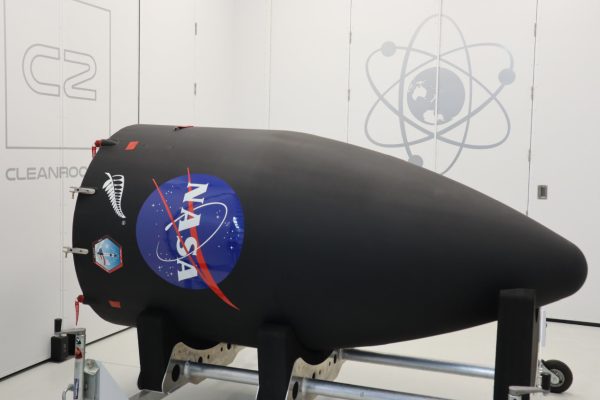Published on the 12/12/2018 | Written by Heather Wright

Another NZ satellite launch, and a new home for the Aussie Space Agency…
Australia’s space plans took a small step forward today with news that Adelaide will be the home base for the Australian Space Agency, while across the Tasman, small satellite launch company Rocket Lab is gearing up for its third orbital launch of the year – taking NASA satellites into space.
Prime Minister Scott Morrison says the agency will open doors for local businesses and Australian access to the US$345 billion global space industry.
“Our government’s $41 million investment into the Agency will act as a launching pad to triple Australia’s space economy to $12 billion and create up to 20,000 jobs by 2030,” Morrison says.
He says South Australia is an ideal home for the Agency – first touted back in 2017 and launched earlier this year with funding from the budget – as it is a key hub for innovation and the technology sector. South Australia already home to more than 60 organisations and 800 employees in the space sector.
“Our $41m investment will act as a launching pad to triple Australia’s space economy to $12 billion.”
“Establishing the headquarters of the Australian Space Agency in South Australia will launch our space and defence sectors to the next level,” South Australian Premier Steven Marshall says.
The Australian Space Agency will be located at Lot Fourteen at the old Royal Adelaide Hospital site.
Meanwhile the Kiwi launch – with a nine-day launch window opening from tomorrow – is the first time NASA CubeSats have had a dedicated ride to orbit on a commercial launch vehicle.
ELaNa-19 (Educational Launch of Nanosatellites 19) will see 13 CubeSats – small satellites the size of a shoebox – lofted into low earth orbit from Rocket Lab’s Electron launch vehicle. The payloads will conduct a range of on-orbit science and technology demonstrations including research measuring radiation in the Van Allen belts to understand their impact on spacecraft, and demonstrations of a solar sail blade and 3D printed robotic arms.
The Electron vehicle for the NASA mission has been called ‘This one’s for Pickering’ in honour of Kiwi-born rocket scientist Sir William Pickering, a former director of NASA’s Jet Propulsion Lab who helped spearhead the United States’ space race and the development and launch of Explorer 1 in 1958.
The expendable Electron rocket is an entirely carbon-composite vehicle powered by 3D-printed electric turbo-pump fed Rutherford engines.
This month’s mission is the third orbital mission for Rocket Lab this year. Last month the company sent its first commercial payloads – including two Fleet satellites for Australian IoT start-up Fleet Space Technologies – into space, completing the mission with flying colours.
The NASA mission will lift off from the Mahia Peninsula on New Zealand’s North Island.
Peter Beck, Rocket Lab founder and CEO, says 2018 has been a banner year for Rocket Lab, reaching orbit twice already.
“Capping it off with our first launch for NASA is a tremendous way to celebrate the new era of improved access to orbit for small satellites,” says Beck, who said it was ‘an honour and a privilege’ to launch NASA payloads on Electron and be the first small satellite launcher to fly under a NASA Venture Class Launch Services contract.
VCLS is a move by NASA smaller class rockets, with dedicated payloads and faster turnaround at a fraction of the cost. Launch opportunities for small satellites and science missions have previously been limited largely to rideshare-type arrangements, flying only when space is available on NASA and other launches.
Rocket Lab was one of three companies selected to provide VCLS, alongside Firefly Space Systems and Virgin Galactic, with Rocket Lab scooping up a US$6.9 million contract.
Last week the launch of an unmanned Falcon 9 from Elon Musk’s SpaceX, didn’t go quite as planned, with the spent rocket malfunctioning on its return to earth and missing its landing site.
Rocket Lab’s Electron vehicles, at just 17 metres high and 1.2 metres in diameter, are expendable.The Rocket Labs launch will be webcast at www.rocketlabusa.com/live-stream



























